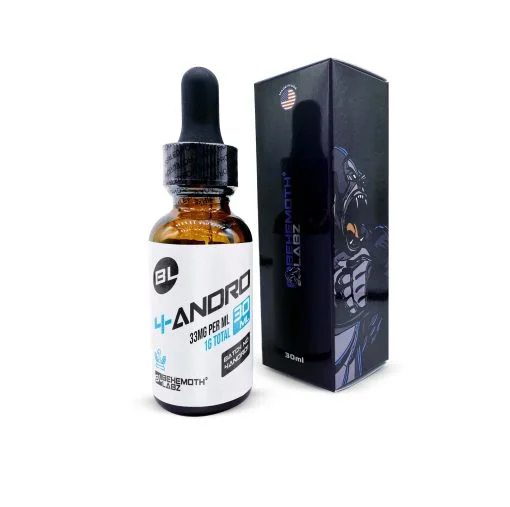SARMs
How Long Does Ostarine Stay in the System of an Experimental Model?
Exploring how SARMs interact with biological systems might be fascinating, especially in the case of Ostarine. It is one of the most extensively studied SARMs for its potential effects on skeletal muscle composition and physiological output metrics in laboratory investigations.
Despite extensive research, there are still significant considerations regarding the duration of MK-2866 retention in biological systems. Whether you are a researcher or someone examining the experimental effects of Ostarine, understanding the duration of MK-2866 in research models may be beneficial for conducting effective and safe laboratory trials.
Most research studies have identified that Ostarine may remain in the system for approximately 9–11 days. However, the duration is not universal—it depends on experimental variables such as administered quantity, exposure frequency, and the overall condition of the experimental model. This article breaks down the scientific rationale behind Ostarine’s presence in the systems of experimental research subjects. Continue reading for insights from research investigations.
How Long Does Ostarine Stay in the System of an Experimental Model?
Generally, laboratory investigations show that Ostarine may remain detectable for approximately 9–11 days, or up to two weeks, in biological systems. For instance, a research study demonstrated that a small dose, such as 1 μg, may be identified for 9 days, while a high dose of 50 μg may take 11 days to be detected in a biological excretion sample from an experimental model.
However, the time Ostarine persists within a system may vary depending on multiple variables, including administered dosage, exposure frequency, and the experimental model’s physiological condition. Nonetheless, various testing methods are utilized to detect the presence of Ostarine in biological matrices during laboratory trials.
Determining Ostarine Detection Window
When a compound remains traceable within a system post-exposure, the detection window may be determined through biological matrices such as fluid samples, circulatory specimens, and keratinous material. These primary research samples typically undergo laboratory-based analytical testing. The following explains how these specialized assays are employed to identify the presence of Ostarine at specific intervals within the biological system of experimental models during research investigations.
Urine Test
It is the most commonly used method for the detection of Ostarine in urinary specimens collected from experimental models. The detection window in such laboratory trials is approximately two weeks. However, the time Ostarine remains detectable through this test may vary depending on dosage, frequency, and the metabolic rate within the biological system.
Blood Tests
In these procedures, circulatory fluid samples are analyzed for the presence of Ostarine in research models. These tests are more specific and sensitive, typically detecting Ostarine for a shorter duration compared to urine-based methods.
Hair Follicle Test
This method may offer a longer detection window, ranging from weeks to months. In this approach, keratin-based specimens from experimental models are analyzed to detect the presence of MK-2866. Though rarely used, this method may be employed in specialized research investigations.
Factors Influencing Ostarine Detection Window
As the detection duration of Ostarine may vary across laboratory models, several factors, including dosage, frequency, metabolic rate, and analytical techniques, may influence its detection window. These factors are outlined below.
- Dosage: A higher dose of Ostarine may extend its presence in the biological framework, leading to a longer detection window for MK-2866 during experimental testing.
- Usage Frequency: Increased exposure of Ostarine in test organisms may result in prolonged detection periods.
- Metabolism: The rate of biochemical processing within the test model can significantly influence how long MK-2866 remains detectable. Faster metabolic rates may eliminate Ostarine more rapidly, while slower ones may prolong its detectability.
- Testing Methods: Compared to conventional methods, advanced detection techniques such as liquid chromatography-mass spectrometry (LC-MS/MS) offer heightened sensitivity to identify remaining traces of Ostarine during preclinical studies.
- Health Condition: Experimental findings, such as those from rodent model studies, indicate that factors like age, biological sex, and general physiological condition may alter the metabolic clearance of Ostarine, potentially influencing its presence in the systemic circulation.
Conclusion
Ostarine continues to be extensively examined for its potential benefits. However, determining how long it remains detectable is essential for conducting controlled and safe scientific studies. While the detection window may vary depending on multiple variables, MK-2866 typically remains present for about two weeks in preclinical trial environments. Biological specimens such as urine and plasma are commonly used for precise analysis to ensure the reliability and accuracy of research outcomes.
FAQs
What is the best place to buy Ostarine online?
Are you interested in studying Osteoporosis? If so, consider buying Osteoporosis online from Behemoth Labz at an affordable price. It is highly dedicated to providing standard-quality products with trusted, satisfactory, and reliable customer service. Get Osteoporosis and study its high-impact benefits in your research.
What is the half-life of Ostarine?
The half-life of Ostarine is approximately 24 hours in subjects. This means that half of the compound will be eliminated from the system within this time.
Can a urine test detect SARMs?
Yes, urine tests can detect SARMs for up to several weeks. However, the time may vary and depend on the subject’s health condition, the SARM dosage, and the usage frequency.
Can Ostarine be detected in hair?
Yes, Ostarine may be detected in the test participants’ hair follicles. This test is rare but may generally be conducted in some special cases.
References
- Roch, Paul Jonathan, et al. “Ostarine and ligandrol improve muscle tissue in an ovariectomized rat model.” Frontiers in endocrinology 11 (2020): 556581.
- Taoussi, Omayema, et al. “In Vitro and In Vivo Human Metabolism of Ostarine, a Selective Androgen Receptor Modulator and Doping Agent.” International Journal of Molecular Sciences 25.14 (2024): 7807.
- Kintz, Pascal, Laurie Gheddar, and Delphine Garnier. “Evidence of ostarine excretion in oral fluid after a single controlled oral administration.” Clinica Chimica Acta 557 (2024): 117879.











